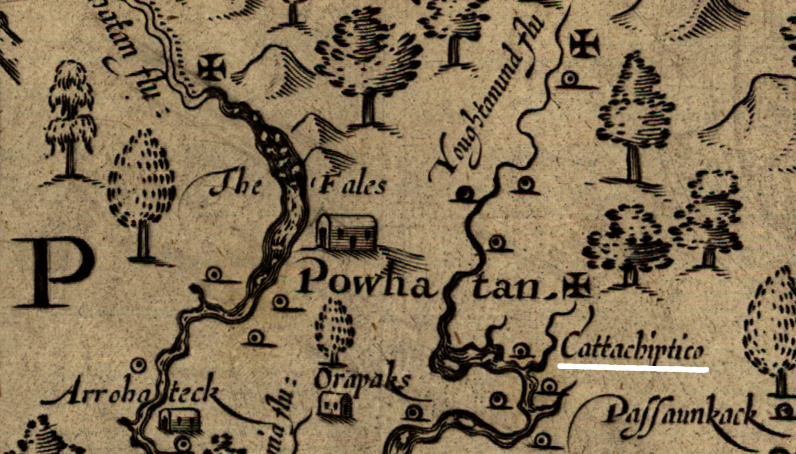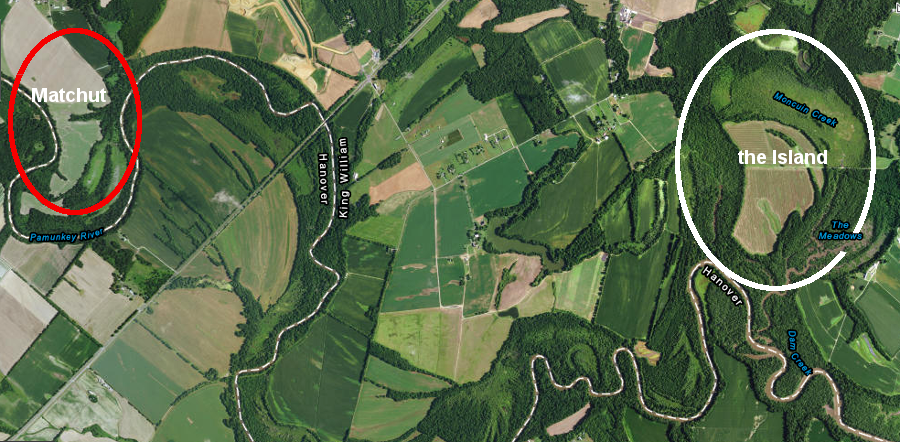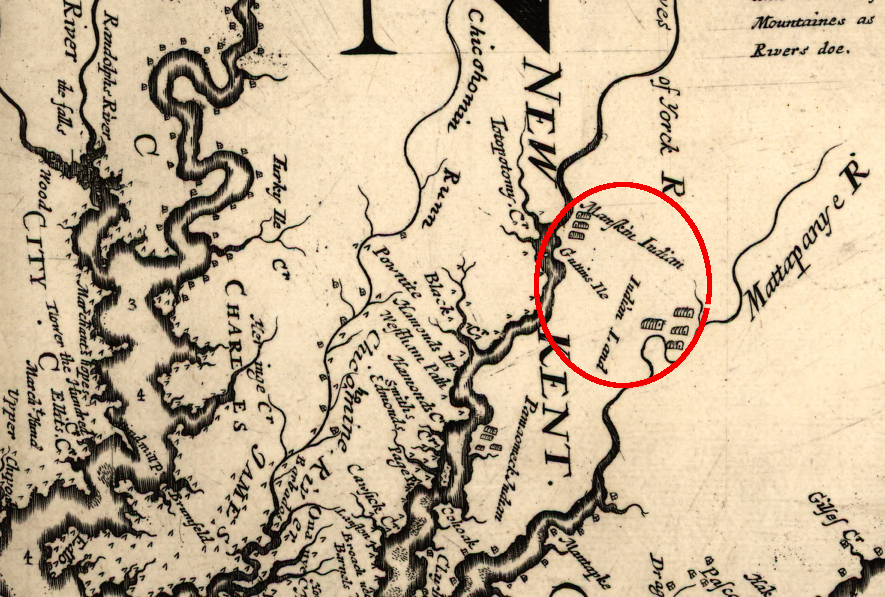
John Smith recorded the location of Cattachiptico on the Youghtanund (Pamunkey River), near where Opechancanough lived after the death of Powhatan
Source: Library of Congress, Virginia (John Smith, 1624)

John Smith recorded the location of Cattachiptico on the Youghtanund (Pamunkey River), near where Opechancanough lived after the death of Powhatan
Source: Library of Congress, Virginia (John Smith, 1624)
When Powhatan moved his capital moved to Matchut, Opechancanough lived nearby at Menmend on the Youghtanund (Pamunkey River) near Cattachiptico. The site was probably at "The Island" between Pampatike and Monquin creeks.1
After Powhatan died around April 1618, the English thought his younger brother Opitchapam assumed his leadership role. Opitchapam lived at Cattachiptico, but it appears that Opechancanough controlled negotiations with the English.2
Opitchapam lacked full control, or served just as a "front man" during Opechancanough's preparations to attack the English. The last "capital" of the organized confederation led by Powhatan, Opitchapam, and Opechancanough between 1618-1646 was wherever Opechancanough lived near Matchut on the Youghtanund River.

Menmend, Opechancanough's home, was downstream from Matchut
Source: ESRI, ArcGIS Online
The peace associated with the marriage of Pocahontas and John Rolfe was ended by Powhatan's younger brother, Opechancanough. Opechancanough organized an "uprising" in 1622, dropping the appearance of peaceful coexistence and attacking the English settlements. About one-third of the colonists were killed. Opechancanough's home at Menmend was clearly the capital of the paramount chiefdom in 1622, at the start of the Second Anglo-Powhatan War.
The English response to the attacks in 1622 was to kill or displace most of the Native Americans living in Tidewater. After the attacks in 1644, the English succeeded in destroying the paramount confederacy. Those two wars greatly disrupted the capacity of any single Algonquian leader to control multiple tribes in eastern Virginia.
Opechancanough was captured in 1646, and soon afterwards was killed while a captive. After signing the Treaty of 1646 to end the Third Anglo-Powhatan War, each tribe became independent of the others. There was no longer a leader with power over more than 30 different Algonquian-speaking tribes.
Today there are seven state-recognized tribes in Virginia that can trace their history back to the paramount confederation led by Powhatan. Each tribe has their own center, and no tribe is subordinate to another.
Since the capture of Opechancanough in 1646, there has been no central "capital" of a paramount confederacy, and no equivalent to Werowocomoco, Orapakes, or Matchut. Menmend was the last of its kind.

in 1670, Native Americans described as the "Manskin" lived in the area of Menmend and Matchut
Source: Library of Congress, Virginia and Maryland as it is planted and inhabited this present year 1670 (Augustine Herrman, 1670)